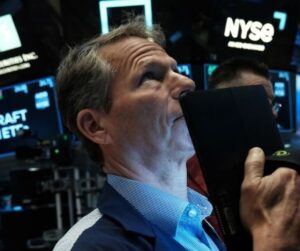“I think I can, I think I can, I think I have a plan. And I can do ‘most anything if I only think I can.” The US economy has had quite the first half of the year: banking turmoil, credit crunch, sky-high borrowing costs, stubbornly high inflation, a debt ceiling nightmare, skyrocketing egg prices, and a manufacturing sector in a recession. Despite expensive tomatoes being hurled at the economic landscape, the United States remains afloat. After the latest first-quarter gross domestic product (GDP) data, the US is proving to be the little engine that could.
US Economy Holding Steady
According to the Bureau of Economic Analysis (BEA), the real GDP growth rate in the first quarter was 1.3%, up from the original estimate of 1.1%. But this was still down from the 2.6% expansion in the fourth quarter. The BEA’s upward revision was driven by modest increases to personal consumption (2.52%), private inventories (0.58%), and government spending (0.89%). Fixed investment and net exports were relatively flat, coming in at -0.03% and 0.01%, respectively.
But while President Joe Biden and his supporters will hold onto the sluggish GDP print as proof that Bidenomics is working, financial markets raised their eyebrows by the notable increase in inflation.
The personal consumption expenditure (PCE) price index rose to 4.2%, unchanged from the first estimate. But the core PCE, which eliminates the volatile energy and food components, was raised from 4.9% to 5%. Moreover, these readings were also higher from the previous quarter. The GDP Price Index, which measures the price of goods and services made in the US and shipped to foreign markets, climbed to 4.2%, up from the first forecast of 4% and the fourth-quarter figure of 3.9%.
The higher core PCE – the Federal Reserve’s preferred inflation gauge because it includes goods and services bought by all US urban and rural households and adjusts measurements on how consumers change their buying pattern – forced the futures market to shift its expectations over what the Federal Open Market Committee (FOMC) will do at the June policy meeting. Investors now anticipate policymakers will pull the trigger on a quarter-point rate hike, lifting the benchmark fed funds rate to a range of 5.25% and 5.5%.
In the end, institutional and armchair traders shrugged off the BEA data, with the leading indexes treading water on the debt ceiling impasse. Who can blame them for leaving the Pepto Bismol in the medicine cabinet? The report confirmed what everyone on Wall Street has been expecting: the US economy is slowing, and inflation remains sticky and stubborn.
Q2: Yay or Nay?
It is still too early to say if the second quarter will be any better or worse than the January-March span. The Atlanta Fed Bank’s GDPNow model estimate expects 2.9% growth, while the Philadelphia Fed Bank Survey of Professional Forecasters shows 1% expansion. Some of the data that have come out for April and May have been mixed.

(Photo by Spencer Platt/Getty Images)
The Institute for Supply Management’s Manufacturing Purchasing Managers’ Index (PMI), a general trend of where the sector is heading, contracted in April. The ISM and S&P Global Services PMIs expanded. Regional central bank manufacturing indexes were stuck in contraction territory for April and May. April retail sales rebounded at a smaller-than-expected 0.4%. The Conference Board’s Leading Economic Index, a chief recession indicator, fell 0.6% in April and increased the six-month average to -4.4%. The M2 money supply declined for the fifth straight month, falling nearly 5% in April.
Meanwhile, all the Federal Reserve reports, be it the Senior Loan Officer Opinion Survey on Bank Lending or the Beige Book, show that financial institutions are tightening their lending standards and business and consumer loan demand has subsided. For an economic system that survives on borrowing, this has been an unfortunate turn of events and, according to Eccles Building, the latest credit crunch is equal to several rate hikes.
The Coming Recession?
Economists and market analysts are confident that a recession is around the corner. It is always six months away! Of course, the downturn can come out of nowhere. Just ask Germany, Europe’s largest economy that officially entered a recession following back-to-back quarters of negative growth. But do not tell the American people the marketplace is doing well. Many surveys reveal a public that is increasingly pessimistic, frustrated, and desperate. After two years of real negative wage growth (inflation-adjusted), price pressures, shortages, and chaos in the banking system, is it any wonder why many Americans think the recession is already here?
All opinions expressed are those of the author and do not necessarily represent those of Liberty Nation.
Do you have an opinion about this article? We’d love to hear it! If you send your comments to [email protected], we might even publish your edited remarks in our new feature, LN Readers Speak Out. Remember to include the title of the article along with your name, city, and state.
Please respect our republishing guidelines. Republication permission does not equal site endorsement. Click here

